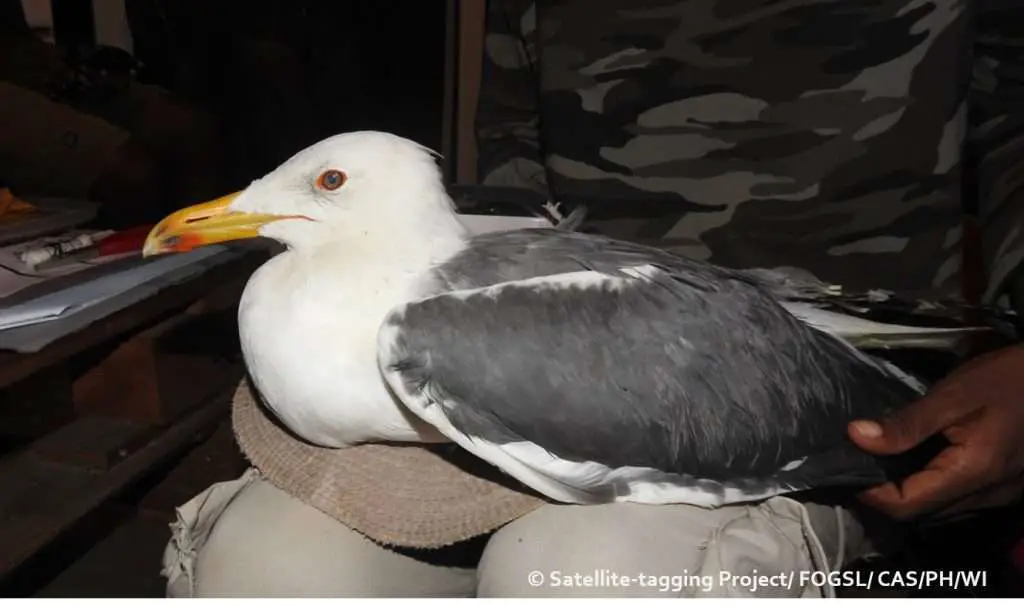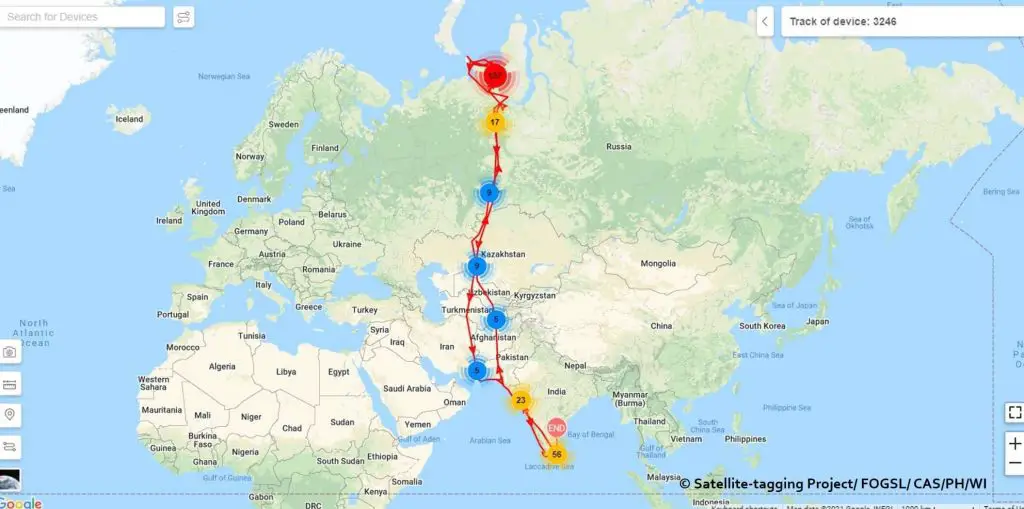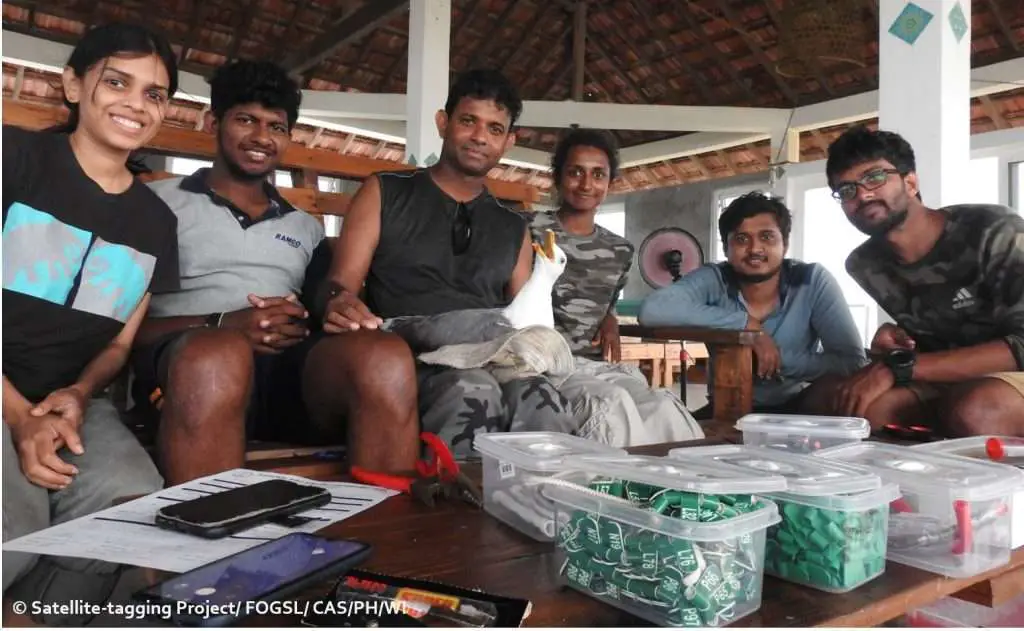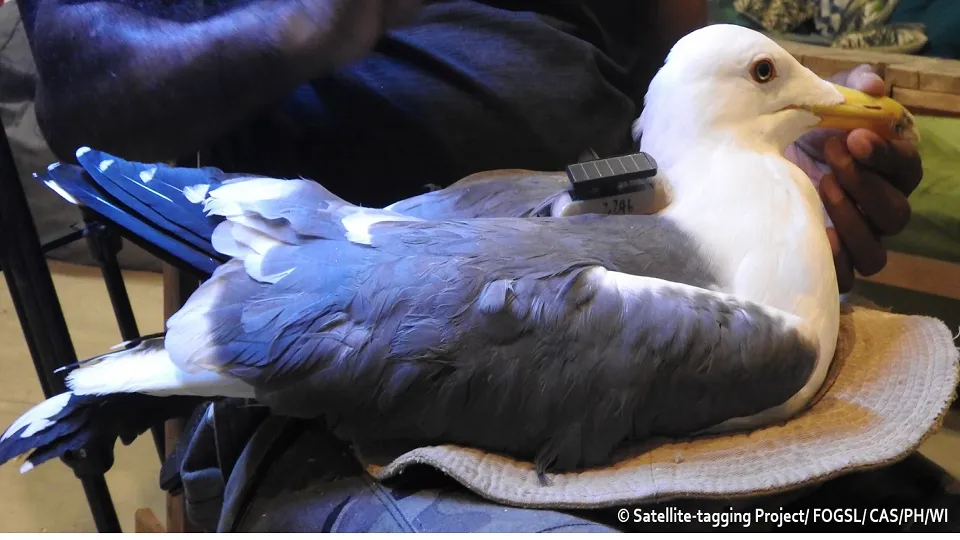“Manike” went from Mannar to Europe and back to Mannar through the Arctic Ocean.
Researchers at the University of Colombo (Sri Lanka) have found the most critical fact about bird migration studies. Heuglin’s Gulls (nicknamed “Manike”), which are tagged on GPS, have migrated from Mannar to Europe and returned back to Mannar via the Arctic Ocean.
This research crew was led by Prof. Sampath Seneviratne and Gayomini Panagoda. They have adopted two Heuglin’s Gulls and named them “Manike” and “Megha”. There was a strange story behind naming these two birds. It was named “Manike” because the song “Manike Mage Hithe” became famous and went viral internationally. The professor said it was called “Megha” in memory of King Ravana’s son.

After attaching these satellite tags, Megha immediately started migrating to the north, and Manike stayed for another 20 days around the Mannar and Rama’s Bridges till the end of April.
“These satellite tags, worn on both the wrist and the cloud, can even detect if they are alive or not. Where do they stay? The professor says it can even tell you how high birds are flying. “We look at their body temperature to see if they are alive. If the bird stays in one place or flies continuously, we can also identify its activity, “he explained.
Amazing facts on bird migration.
The Professor said more interesting facts about this wonderful story. “Different races of birds came to the country at different times. Where did they come from? Where did they go and what did they do? There are many answers to these questions. But there is no definite information, “the professor said to Shutterbulky.”
Every year, billions of bird species come to our country, and those migratory birds keep coming back for a while as a routine, and some of them stay for months. So our research led us to collect information about how these birds got here. How to go back? What is their route?
Megha took off for northern Russia, landing on the Yamal Peninsula, his first breeding ground. A few days later, Manike also reached Yamal. However, we observed that Manike had used a separate route via Urals to reach Yamal.
In Yamal, they engaged in breeding during the summer season from June to August. The birds returned to the south in early October. The journey towards the south started by ‘Manike’. She returned to Mannar on November 4, after six months and nine days of leaving Sri Lanka.

At the moment of writing this article, Megha has not yet come. “He is still on the way. But Manike returned safely. Professor said to Shutterbulky. Accordingly, she became the first bird in this research team to complete the migration cycle with the satellite tags and the first bird to provide information on the ecological link between Sri Lanka and the European Arctic.
People don’t alter history any more than birds alter the sky; they just make brief patterns in it.
The Author: Terry Pratchett
The total number of kilometers she has flown here is 19,360. It’s really amazing. It will take a few more days for Megha to return. But Manike was late and came quickly. He said to us
They return to their homeland, where they lay their eggs and hatch. That’s because they can’t stay in those areas in the winter due to a lack of food.
Researchers have found that birds are using the Earth’s magnetic ranges to fly. Also, birds never fly over the Himalayas due to a lack of oxygen. Yes, bird migration is really awesome.
It has also been found that these birds fly at night, looking at the location of star clusters. They identify the zones by signs of stars, hills, jungles, etc. When the first bird comes through, the others follow his route. This is how birds get used to it. These are really amazing facts on bird migration.
Researchers were able to observe the in-and-out route of Manike. She traveled from Talaimannar to Urumale beach, across the Indian Ocean, Pakistan, Afghanistan, and Kazakhstan. returned via the Arctic and Iranian Seas. This is a journey that goes through about 10 countries. In some places, it flies a long distance continuously. There is no obstacle that makes her fly, even at night.
Also, her male animal always goes to the place where she lays her eggs. If there are other animals, chase them away and keep them safe until a female bird arrives. There are many interesting stories about bird migration.

The professor paid his gratitude for
The technical partnership is between the Sri Lankan Bird Science Group (FOGSL) (led by Professor Sarasko Tagama) of the Faculty of Animal Science, University of Colombo and the Center for Environmental and Environmental Sciences (led by Professor) of the Chinese Academy of Sciences. Reikao and her team).
This work is mainly for Palmyrah House (PVT) Ltd. It is funded by Vayu Resort and Mannar. Wetland International is also a partner in this study.
The Wildlife Conservation Agency and the Sri Lanka Navy also help by giving out permits and making sure that a site is safe.
Source – Faculty of Science | All the information & photo credit goes to respective authorities. DM for removal please.
Related: Unsinkable Sam, The Cat Who Survived Three Shipwrecks In WWII

